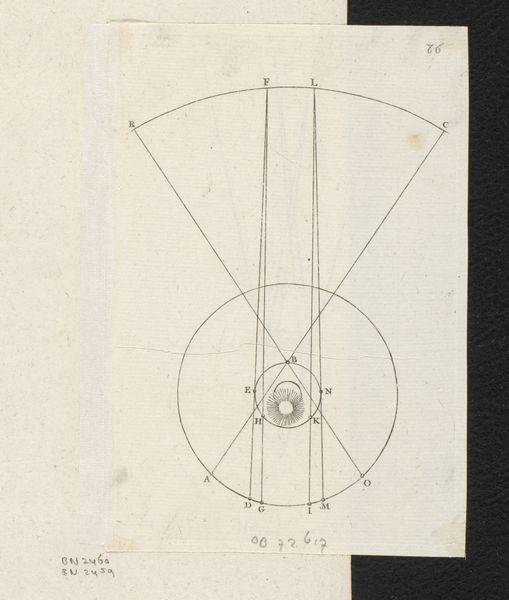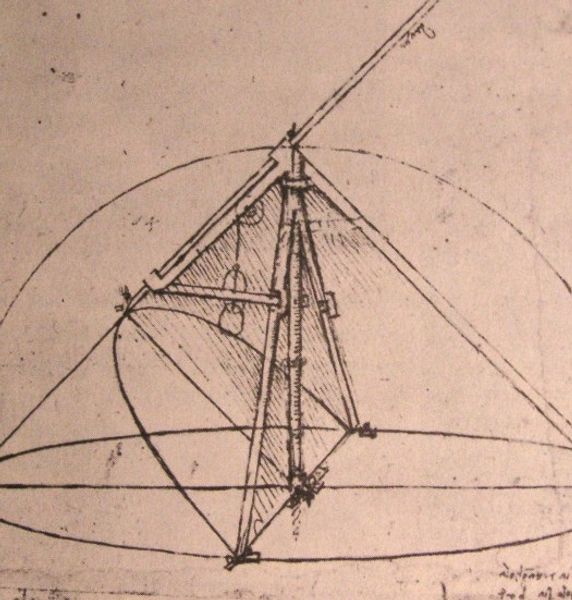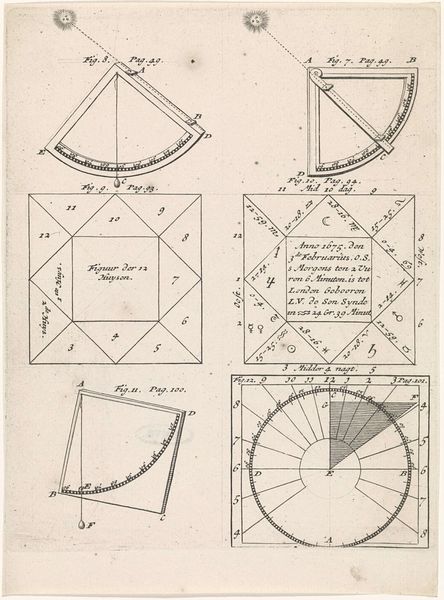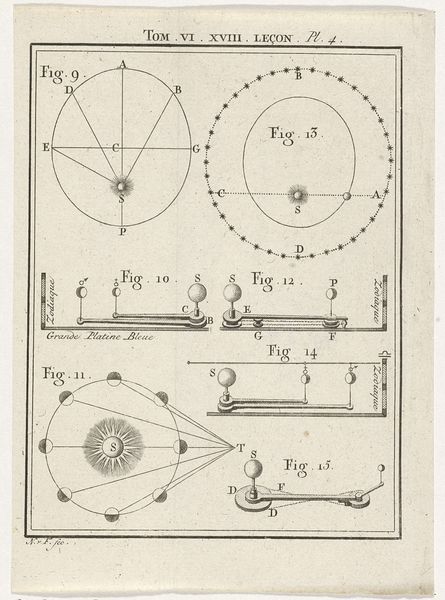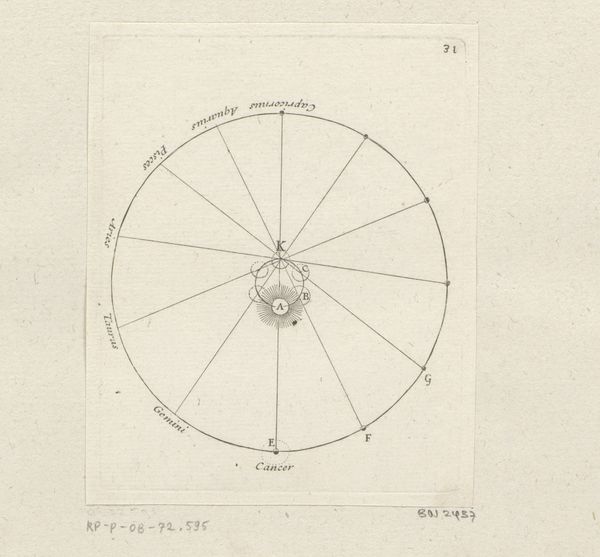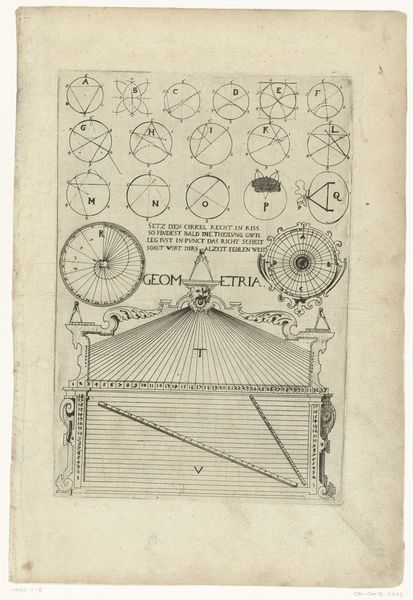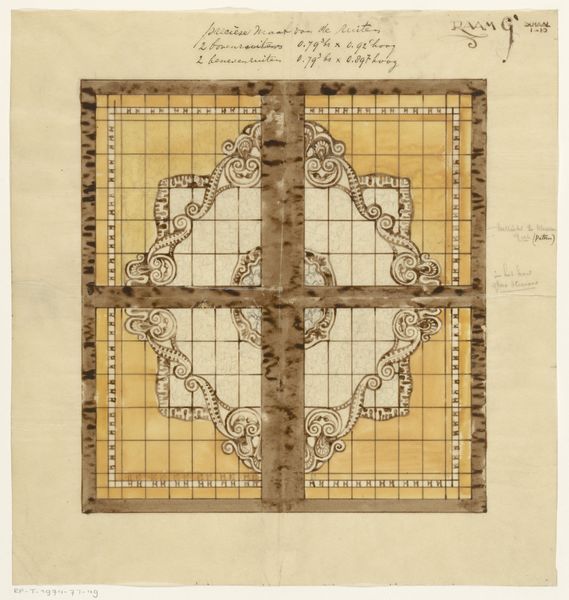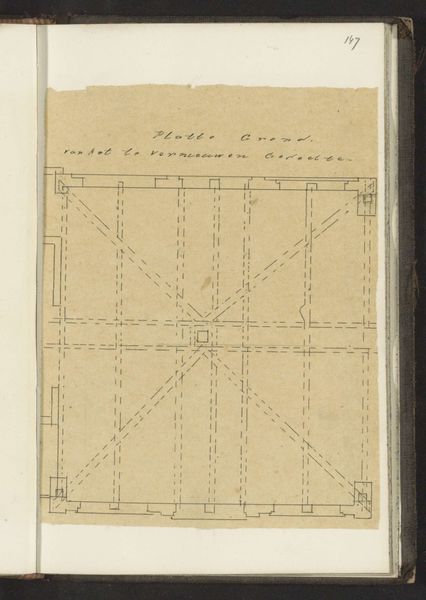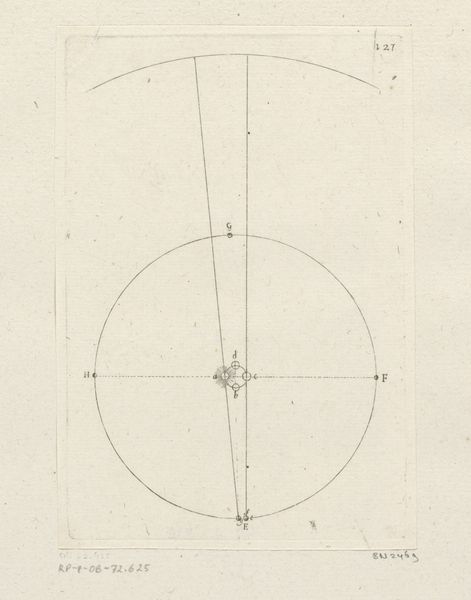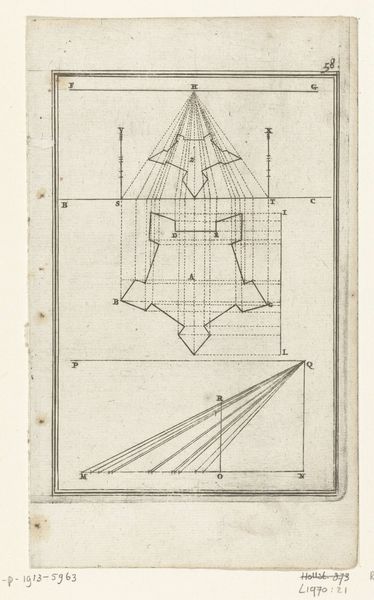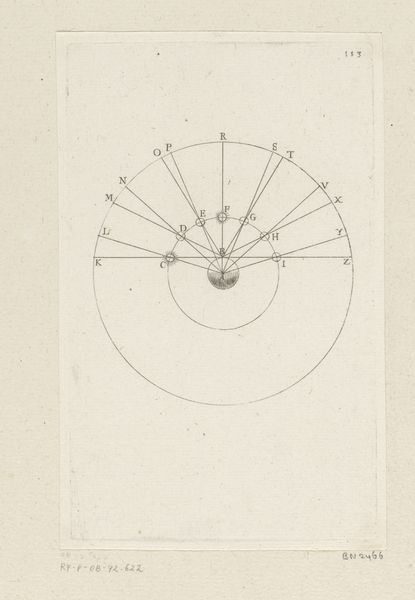
St. Peter's, centering truss, tunnel vault, section (recto) blank (verso) 1500 - 1560
0:00
0:00
drawing, print, paper, ink, architecture
#
drawing
# print
#
paper
#
form
#
11_renaissance
#
ink
#
geometric
#
line
#
architecture
Dimensions: sheet: 11 5/8 x 17 1/8 in. (29.5 x 43.5 cm)
Copyright: Public Domain
Editor: So, here we have an architectural drawing from between 1500 and 1560, "St. Peter's, centering truss, tunnel vault, section," created by an anonymous artist with ink on paper. It’s remarkably precise. What do you make of its clean lines and technical focus? Curator: I see a potent intersection of power, religion, and architectural ambition. This drawing represents more than just the structural plans for St. Peter’s. Consider the social and political context of its creation. Who commissioned this design, and what were their motivations? The Church was a major powerbroker. The Renaissance papacy aimed to express dominance and spiritual authority through architecture, essentially solidifying its control through monumental spaces. Editor: That makes sense. It’s interesting how something seemingly technical can carry so much cultural weight. Were there particular symbolic meanings associated with the architectural elements? Curator: Absolutely. Think about the tunnel vault. Its sheer scale communicates divine grandeur, literally towering over the populace. But even the lines themselves hold power. Look at the precision – what does that communicate to you? To me, it suggests not only technical prowess, but also the intent to manifest a divine order through architecture and its centralisation of power in that period. Consider the impact of such spaces on individuals - how they affect behaviour, perception, and even belief. It’s not simply about aesthetics; it's about influencing and controlling social space. Editor: So, seeing this drawing is more than just looking at a design; it’s about understanding the power structures it represents? Curator: Precisely. And understanding that architects weren’t just designers, but active participants in shaping societal power dynamics. Editor: I hadn't considered that. I guess there's a lot more to architectural drawings than meets the eye. Curator: Indeed. This image allows us to explore critical discussions around religious authority, social control, and artistic responsibility during the Renaissance and even echoes in our time.
Comments
No comments
Be the first to comment and join the conversation on the ultimate creative platform.

